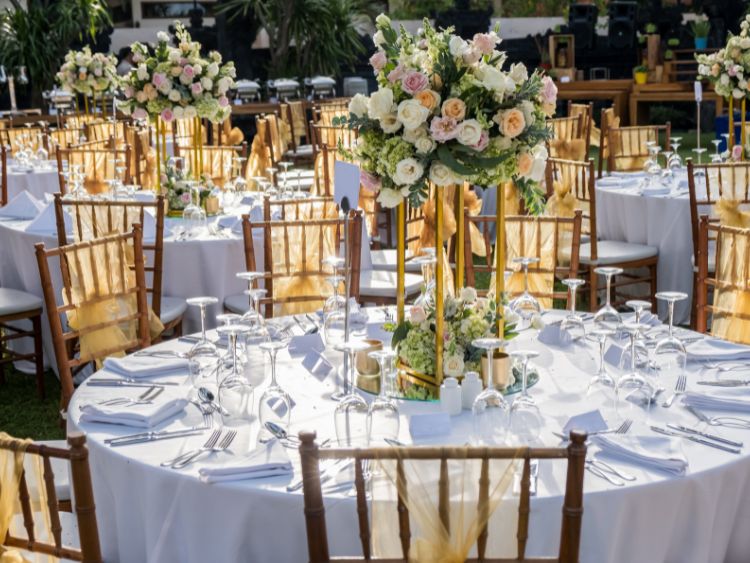When it comes to making a strong impression, men’s formal attire plays a key role. Whether you’re attending a wedding, a black-tie event, or an important business meeting, your outfit needs to speak volumes about your style, professionalism, and attention to detail. But what exactly constitutes formal attire for men, and how do you nail the look without feeling overdressed or, worse, underdressed?
In this guide, we’ll dive deep into the essentials of men’s formal attire, breaking down everything from suits to accessories. By the time you’re done reading, you’ll not only understand how to elevate your wardrobe but also be able to confidently step out in style, no matter the occasion.
What is Men’s Formal Attire?
At its core, formal attire for men is all about dressing for sophisticated and high-stakes events. The dress code can range from business formal (think sharp suits) to ultra-formal (like white tie or black tie ensembles). But let’s break it down a bit more, so you’re not left scratching your head.
Types of Formal Attire
- Business Formal
This is your standard for corporate events, board meetings, and presentations. A well-fitted suit with a crisp shirt and tie is essential. - Cocktail Attire
Somewhere between smart casual and full formal, cocktail attire allows for a bit more freedom, but a dark suit is still a must. - Black Tie
Reserved for more glamorous occasions, this calls for a tuxedo, black bow tie, and polished leather shoes. - White Tie
The crème de la crème of formality. Think tailcoats, white bow ties, and polished patent leather shoes.
The Foundation: Suits
A well-tailored suit is the backbone of any formal wardrobe. There’s a reason people say “the suit makes the man.” It’s versatile, timeless, and commands attention.
Choosing the Right Suit Fabric
- Wool: The most common and versatile fabric. It breathes well, looks sharp, and can be worn in most seasons.
- Cotton: Lightweight and breathable but may wrinkle more easily. Perfect for warmer climates.
- Linen: Great for summer events, but be aware of the tendency to crease.
- Tweed: A bulkier, heavier fabric for colder months. Ideal for winter weddings or outdoor events.
Suit Styles
- Single-breasted: This is your classic, go-to style. It works for most occasions and body types.
- Double-breasted: A bit more statement-making. Ideal for taller men or those wanting to stand out at a formal event.
- Three-piece: If you’re aiming to look extra sharp, adding a waistcoat takes your ensemble to the next level.
Colors
When choosing colors, remember that certain shades scream sophistication, while others lean casual.
- Navy blue: A classic that works for almost any formal occasion.
- Charcoal grey: Another versatile option that conveys confidence and authority.
- Black: Perfect for black-tie events but can sometimes feel too formal for business settings.
- Light grey or tan: These are more appropriate for summer or daytime events.
Shirt and Tie: The Perfect Pairing
Your shirt and tie can make or break your formal outfit. The key is balance—if your suit is simple, your shirt and tie can introduce some flair, and vice versa.
- Shirts: Stick with classic colors—white, light blue, or pale pink. Ensure your shirt is well-fitted and ironed to perfection.
- Ties: Match your tie to your suit, but don’t be afraid to add some personality with patterns. A silk tie is always a winner when it comes to formal occasions.
Footwear: Stepping in Style
Your shoes are often the first thing people notice, so make sure they’re spotless and suitable for the occasion.
- Oxford shoes: The gold standard in formal footwear. These are sleek, low-heeled shoes that scream professionalism.
- Derby shoes: Slightly more casual than Oxfords but still formal enough for most events.
- Loafers: Best reserved for less formal occasions, but if paired correctly, they can add a modern touch to your look.
Accessories: Small Details, Big Impact
Accessories aren’t just add-ons; they complete the outfit. Don’t overlook them.
- Belts: Your belt should match your shoes, both in color and style. Opt for a sleek leather belt with a simple buckle.
- Pocket squares: A simple yet effective way to add a splash of color or pattern to your suit.
- Cufflinks: These little details can add a lot of sophistication, especially for black-tie or white-tie events.
- Watches: A classic dress watch with a leather or metal band is the perfect accessory for formal attire. Avoid chunky or overly flashy styles.
FAQs About Men’s Formal Attire
1. What’s the difference between a tuxedo and a suit?
A tuxedo typically includes satin details—on the lapels, buttons, and sometimes the pocket trim—while a suit does not. Tuxedos are reserved for black-tie events, whereas suits are more versatile and can be worn in a variety of settings.
2. Can I wear a suit without a tie to a formal event?
While ties are generally expected at formal events, there’s been a growing trend toward tie-less looks in less strict formal settings. However, it’s better to err on the side of caution—bring a tie and remove it later if you feel overdressed.
3. What color suit is best for a job interview?
Navy blue and charcoal grey are considered the best colors for job interviews. They convey professionalism and confidence without being overly bold.
4. How should my suit fit?
Your suit should hug your shoulders without being tight, with sleeves ending just at the wristbone, allowing a half-inch of shirt cuff to show. Trousers should break slightly on your shoes but not bunch up.
5. Are black shoes always the best choice for formal events?
Black shoes are the safest bet, especially for black-tie or more conservative events. However, dark brown shoes can add a touch of warmth and personality to navy or grey suits.
Conclusion
Dressing well is an art, and men’s formal attire is the canvas. When done right, your outfit doesn’t just enhance your appearance; it boosts your confidence and presence. Whether you’re donning a classic suit for a corporate meeting or going all out with a tuxedo for a black-tie affair, knowing how to combine the right elements will ensure you always look your best.
Remember, the key to pulling off any formal look is confidence. So suit up, step out, and own your style!



